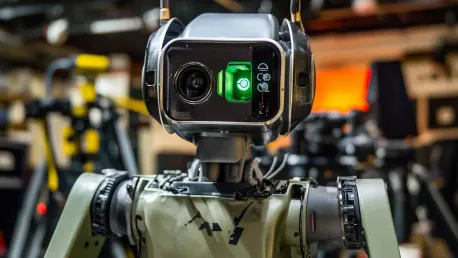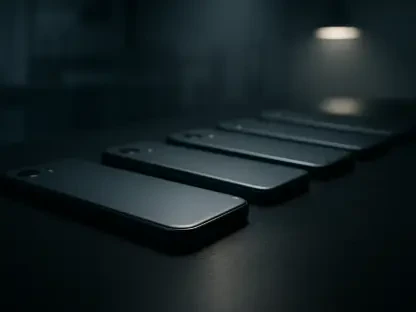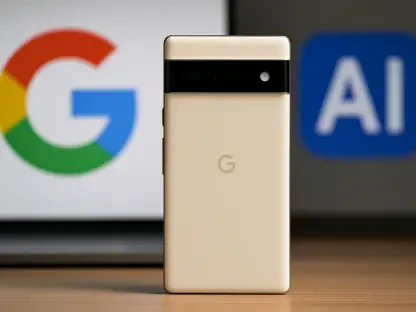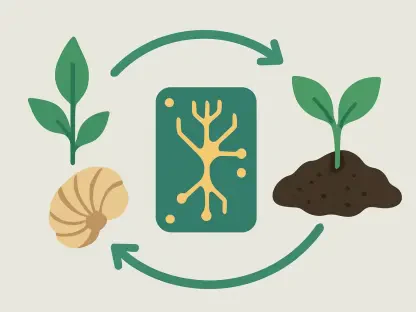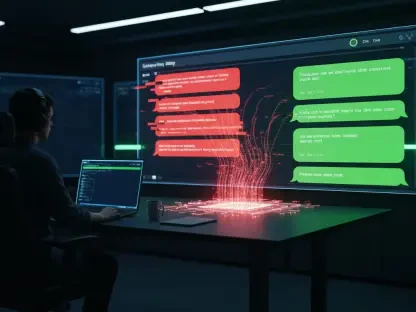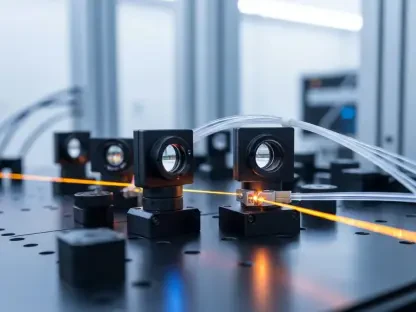MIT Lincoln Laboratory, in collaboration with the University of Notre Dame, has introduced an advanced exploration tool known as the Soft Pathfinding Robotic Observation Unit (SPROUT). This vine robot is specifically designed to assist emergency responders during urban search-and-rescue missions, offering groundbreaking solutions to navigate debris and collapsed structures effectively.
The Genesis of SPROUT
Collaborative Effort
The development of SPROUT is a testament to the power of collaboration, combining the comprehensive engineering expertise of MIT Lincoln Laboratory with the specialized knowledge of vine robotics from the University of Notre Dame. This joint venture benefits from Professor Margaret Coad’s extensive experience at Notre Dame, ensuring that the project draws on a rich blend of theoretical insights and practical applications. The team embarked on this initiative with a shared vision of transforming traditional search-and-rescue operations, which often suffer from technological limitations when navigating through complex and hazardous environments.
Cutting-edge Robotics
At the core of SPROUT’s innovation is its cutting-edge design, which addresses the inefficiencies of existing search-and-rescue technologies. The robot’s inflatable, soft-bodied structure stands out as a significant advancement, capable of squeezing through tight spaces and debris-laden pathways that conventional robots struggle to manage. This unique design emerged from rigorous research and development efforts, emphasizing flexibility and resilience in structurally unstable environments. The project continually iterates on design improvements, ensuring that SPROUT remains at the forefront of robotics technology and emergency response solutions.
SPROUT’s Unique Design
Inflatable Structure
SPROUT’s defining feature is its airtight, inflatable tube that unfurls from a fixed base. This innovative design enables the robot to extend through narrow passages and navigate around obstacles without compromising its structural integrity. By maintaining flexibility while maneuvering through constricted spaces, SPROUT can enter areas that would otherwise be inaccessible using traditional robotic or manual methods. The inflatable structure not only allows for seamless navigation but also contributes to minimizing the risk of damage to the equipment and the environment it explores, making it ideal for use in unpredictable and hazardous situations.
Controlled Navigation
The operational control of SPROUT is facilitated through intuitive joysticks, allowing operators to manage its movement with precision. This control mechanism ensures that the robot can be navigated through complex environments, overcoming challenges posed by debris and collapsed structures. On the tip of the robot are cameras and sensors that capture vital images and gather environmental data. This sensory input is crucial for mapping out the area, providing first responders with real-time information that enhances their situational awareness and decision-making capabilities. The ability to gather and relay data accurately and efficiently is a hallmark of SPROUT’s design, proving indispensable in search-and-rescue missions.
Overcoming Development Challenges
Flexibility and Control
Developing SPROUT required addressing substantial technical challenges associated with its inflatable and deformable nature. Ensuring precise navigation within intricate environments necessitated managing air pressure with high accuracy and reducing friction to facilitate smooth movement. These challenges demanded innovative solutions from the development team, who worked meticulously to calibrate the robot’s control systems. By fine-tuning these aspects, SPROUT’s reliability and performance in structurally compromised conditions were significantly enhanced. The team’s ability to overcome these obstacles reflects the robustness of the robot’s design and its readiness for practical deployment.
Practical Testing
To refine SPROUT’s functionality and ensure it meets the real-world demands, extensive practical testing was conducted at the Massachusetts Task Force 1 training site. This involved active engagement with search-and-rescue responders who provided critical feedback on the robot’s design and usability. By incorporating this practical experience, the development team could identify areas for improvement, enhancing SPROUT’s durability, portability, and operational efficacy. The iterative testing process underscored the importance of aligning the robot’s capabilities with the actual needs of emergency responders, ensuring that it is equipped to handle the complexities of disaster scenarios effectively.
Practical Applications
Search-and-Rescue Operations
SPROUT’s primary function centers on assisting in urban search-and-rescue operations, where its advanced design offers substantial improvements over traditional methods. Unlike conventional technologies that often require cutting access holes or using rigid robots, SPROUT presents a non-invasive alternative capable of navigating collapsed structures without causing further disruption. Its ability to deploy quickly and maneuver efficiently through debris enhances the safety and efficiency of rescue missions. SPROUT’s inflatable nature allows it to adapt to various environments, making it a versatile tool for emergency responders who need reliable and adaptable equipment in critical situations.
Real-Time Mapping
Equipped with sophisticated cameras and sensors, SPROUT excels at gathering real-time imaging and environmental data. This capability is especially valuable for first responders, as it provides them with critical insights into the areas they need to explore without risking human lives. The data collected by SPROUT aids in the accurate mapping of voids and pathways within collapsed structures, improving the coordination and strategic planning of rescue efforts. The robot’s ability to relay detailed information in real-time underscores its role as an indispensable tool in enhancing situational awareness and facilitating effective emergency response operations.
Future Directions
Extended Capabilities
Looking ahead, the development team aims to extend SPROUT’s operational capabilities, including longer deployment lengths and enhanced mapping abilities. These improvements are expected to broaden the robot’s scope of application, making it even more effective in search-and-rescue missions. By increasing its reach and data collection accuracy, SPROUT can provide even better support to emergency responders. Continuous innovation in extending its features will ensure that SPROUT remains a cutting-edge solution for navigating and exploring difficult and hazardous environments, keeping rescue teams equipped with the best tools available.
Broader Applications
Beyond immediate emergency response scenarios, SPROUT’s potential applications are expanding into other areas such as maintenance and inspection of critical infrastructure and military systems. Its ability to access hard-to-reach areas without requiring significant structural modifications makes it a versatile asset in various industries. By leveraging SPROUT’s capabilities, organizations can conduct detailed inspections and maintenance operations in environments that are typically challenging to access. This broadening of applications reflects the versatility and adaptability of SPROUT’s design, highlighting its value across multiple sectors and use cases, far beyond its original scope.
User Feedback
Enhancing Usability
First responders’ feedback has been crucial in refining SPROUT’s design to better meet operational demands. Practical engagements with emergency personnel allowed the development team to make informed enhancements, improving the robot’s durability, portability, and overall efficacy. By actively incorporating user feedback into the design process, the team could address specific needs and challenges faced by responders in real-world scenarios. These refinements ensure that SPROUT remains a reliable and efficient tool, capable of withstanding the rigors of search-and-rescue missions and delivering consistent performance under pressure.
Continuous Improvement
MIT Lincoln Laboratory, working in collaboration with the University of Notre Dame, has unveiled a cutting-edge exploration device called the Soft Pathfinding Robotic Observation Unit (SPROUT). This innovative vine robot is specifically engineered to support emergency responders during urban search-and-rescue missions. In situations involving collapsed buildings and debris, SPROUT offers unprecedented navigation capabilities. By leveraging advanced soft robotics technology, it can traverse complex and cluttered environments that would typically be challenging for traditional robots.
SPROUT’s design allows it to extend and contract, much like a vine, enabling it to reach otherwise inaccessible spaces. This functionality proves to be invaluable in scenarios where locating and assisting trapped individuals is crucial. The collaboration between MIT and Notre Dame has resulted in a tool that significantly enhances urban search-and-rescue operations, providing life-saving aid in critical moments.
Overall, the introduction of SPROUT marks a significant advancement in robotic technology, offering new solutions and hope in the realm of emergency response.
